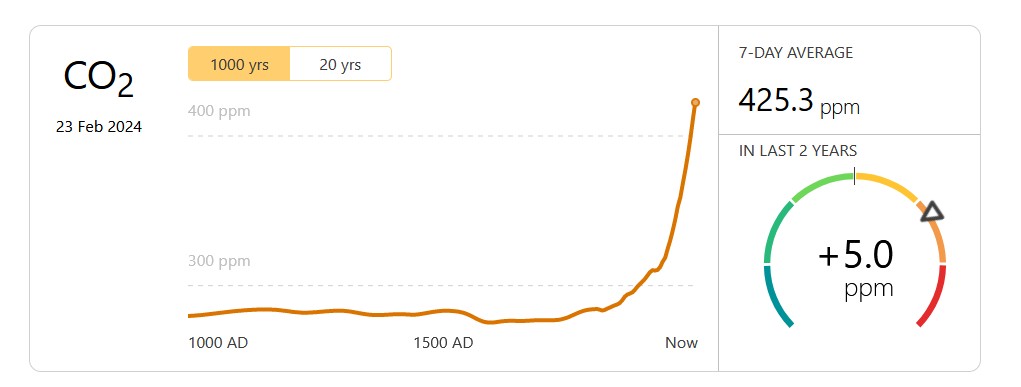What is the 350 ppm all about
Reading time: 3 minutesTL;DR
350 parts per million (ppm) is what the concentration of CO2 in the atmosphere many scientists think will limit us to 1°C of warming and stabilise the climate.
We passed this threshold in 1990.
Explanation
Here, parts per million (ppm) is about the concentration of CO2 in the atmosphere. For around 6,000 years of human civilisation the CO2 was 275-280ppm until the beginning of the industrial revolution in 1760ish.
By 1990 we’d reached 350ppm. At the time of writing in 2024 we’re at 425ppm.
So if we’re talking about the bathtub analogy then we want the bath to be at 350 ppm. It’s currently at 425 ppm and we’re worried it’ll start overflowing at 500 ppm.

If we’re going to decarbonise the economy and reduce carbon emissions we need to know what the target is. How much should we reduce atmospheric level of CO2 to? We can’t eliminate it, it is a vital gas that actually keeps us warm and hell yes it is plant food (we know!).
If we get the global economy to net-zero this just means the ppm stops rising. Staying at net-zero, over time the ppm will drop. If we go beyond net-zero and end up in a world where we remove more carbon emissions than we create, we’ll lower this ppm value faster.
If we don’t act quickly enough the ppm will continue to rise quickly and we risk reaching Climate Tipping points and accelerating feedback loops.
There’s a good argument to be made that 1.5°C warming is the wrong target, and it should be CO2 concentration of 350ppm.
Fun Fact
Did you know 500 ppm is also 0.05%? Sounds like a tiny number - how can CO2 have that much effect on the atmosphere? Everything is a poison if the dose is right - humans can even die from too much water.
Does the number 0.05 ring a bell? In a lot of places in the world that is the maximum amount of alcohol you can have in your system and legally drive a car. That’s right, a tiny little amount of alcohol in your bloodstream has a massive effect on the rest of you.
Little things can have a big influence. Which is what also gives us hope - we don’t need everybody on board with climate action, just the right amount.
Further reading
How the World Passed a Carbon Threshold and Why It Matters (2017)
Replacing the 1.5°C target with what science demands: The 350 ppm limit 28 September 2023